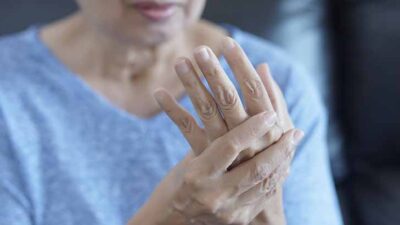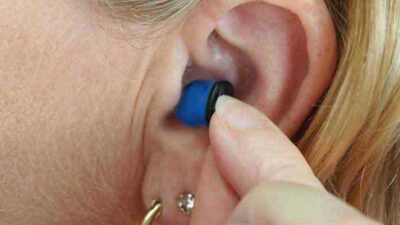Arthritis, which causes painful inflammation and stiffness of the joints, often affects the feet and the pain can be quite intense, causing a loss of strength, flexibility, and mobility.
Fortunately, there are several different treatment methods available to relieve and slow the progress of the disease.
When these treatments are followed properly, most people with arthritis can successfully manage their pain so that they can lead happy and fulfilling lives. Below are the different treatment options available for arthritic feet[1].
Treatment Options for Arthritic Feet
#1 Foot massage
Foot massages not only feel good, but they also have a therapeutic effect[2] in that they can improve circulation and reduce tension, both of which can relieve pain.
When massaging your feet, start at the top of the foot, including the toes and ball of the foot, and work your way down to the heel.
#2 Heat and ice
Heat and cold therapy work in different ways, but both are effective at providing pain relief. Cold can help reduce inflammation because it constricts the blood vessels in surrounding muscles, thereby decreasing blood flow to painful joints.
Heat, on the other hand, helps loosen the muscles, which helps reduce muscle spasms and joint stiffness.
#3 Move more/maintain a healthy weight
While arthritis in the feet can greatly diminish your desire to maintain an exercise program, it’s actually very important that you stay active. A moderate exercise program aids joint function and reduces stiffness as well as pain.
Although high-impact activities, like jogging or tennis, are not recommended, lower impact activities such as swimming, gardening, walking or biking, are definitely beneficial.
Staying active is also a good way to maintain a healthy weight, which also helps reduce stress on the joints. Reduced stress will result in pain relief and better joint function.
#4 Pain medication/topical creams/steroid injections
Nonsteroidal, anti-inflammatory drugs can significantly reduce swelling and pain. However, like any drug, you should always consult with your doctor before taking them.
Topical medications can also provide pain relief for arthritic feet. The key ingredient for these topical creams is capsaicin, which decreases the amount of substance P, a pain transmitter in the body.
Another option is a steroid injection, which can very effectively reduce pain and inflammation. However, the relief received from these injections is only temporary.

Difference between normal and arthritic feet. Shutterstock Images
#5 Physical therapy
Physical therapy (PT) can improve range of motion, strength, and flexibility as well as relieve stress on your arthritic joints.
A trained physical therapist can design an individualized exercise program that suits your lifestyle and specific health requirements.
Physical therapists have a variety of modalities that can be used to decrease inflammation such as cold packs, lasers, massages, ultrasound, and whirlpools.
However, sometimes PT can actually intensify joint pain in which case your doctor will likely discontinue your PT treatment.
#6 Proper footwear
When you have arthritis, one of the best things you can do for arthritic feet is to wear comfortable, supportive shoes.
They should be wide enough so they won’t irritate bunions[3] or calluses and will accommodate stiff and swollen joints.
Arch support is also critical as it can stabilize joints and evenly distribute pressure on the bottom of the foot.
Today, arthritic footwear is designed to be stylish and comfortable, and there are many different types of arthritic shoes to choose from such as arthritic slippers, arthritic sneakers, arthritic dress shoes and more. To find the best shoes for arthritis, make sure they have the following qualities:
- comfortable arch support to mitigate pain and provide shock absorption
- ergonomic soles with a mild rocker design and soft cushioning midsoles to reduce pressure on the big toe joint and help propel the foot forward
- an extra-depth design to accommodate thick insoles and orthotics and allow for greater toe movement and minimize pressure on the foot
- non-binding, stretchable uppers to ease pressure and provide a more customized fit







 This article changed my life!
This article changed my life! This article was informative.
This article was informative. I have a medical question.
I have a medical question.
 This article contains incorrect information.
This article contains incorrect information. This article doesn’t have the information I’m looking for.
This article doesn’t have the information I’m looking for.